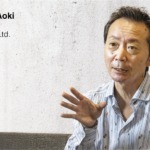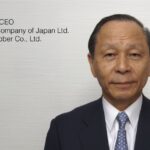We recently had the pleasure of talking to Eriko Yamaguchi, the president of MOTHERHOUSE, a fashion brand developed after her time spent living and working in Bangladesh.
What do you believe is the aspect that sets Japanese designers apart from the rest of the world?
I just came back from LA last week and saw the products by big designers such as Comme des Garcons, Issey Miyake, and Yohji Yamamoto in many stores, however, it is important to remember that they created their brands in the 1980s. We are still celebrating Japanese designers from this time period, which is of course a good thing, in a sense. However, our generation really has to express itself more.
In terms of Japanese essence, I really centers on the design, focusing on materials rather than decorations, and focusing on craftsmanship. These three elements are always grouped together with Japanese fashion. Nowadays, the younger generation is looking more towards Western styles and has really been influenced by pop culture from overseas. We have to look at Asian people, customers and our uniqueness, such as nature for inspiration with colors, rather than importing vivid designs from the West. We do have Tokyo street culture, which is very ‘pop’, however, this is totally different from other styles found elsewhere.
However, I know that many American people look for what is coming from Japan, very eagerly. As such, I feel that there is some scope for change. Fashion in LA is often quite fancy, but now, they are looking for something ‘quiet’, which is often different from Japanese ‘quiet.’
Why does MOTHERHOUSE place such an emphasis on traditional methods, when many other companies are aggressively streamlining and automating production techniques?
Often when I went to visit Japanese traditional craftmanship groups, I felt that many of the workers are struggling. The craftsman has to look at the customer and think about the technology and materials used, however, they are not often connected to the customer themself, working in small factories. As the customer is not in front of them, they often struggle with sales and catching what the customers need, meaning that they need to work with salespeople. There is also no designer in these factories, which if there was, they would be able to make effort that is connecting and catching to the customers. Many of the elements are separated in the Japanese traditional industry, and this is one of the biggest problems at play. We have to come together, connect, and make the links in-between.
Our company is doing this in developing countries; I am the designer working with artisans in Bangladesh, India, Nepal, and Sri Lanka and Indonesia. I speak their languages, and I’m able to communicate with them very well. The craftsman needs some inspiration from the designer, otherwise they will continue to create the same products. By providing inspiration, we are able to make new, exciting products for customers each season. Overall, communication between the designer and craftsman is very important in the fashion industry, but I believe this is somewhat missing in the Japanese fashion industry.
How is the increased awareness surrounding sustainability affecting your operations?
By nature, our company was established to balance social responsibility and economics. Our staff are always thinking about how they can create both sales and smiles, not only for our customers, but also our craftsmen. I feel that our staff are quite unique, in this sense.
We have tried new initiatives, such as providing lunch in our Bangladesh factories. Although this comes at a cost, it helps to maintain the family environment for our workers and may lead to better quality products overall. I have to explain the value of providing a lunch to our staff, and in turn, our customers, even if it will lead to a slight increase in the overall product price. Many CEOs of large companies have often told me that I place social responsibility as too high of a priority for the business, however, I do really think that it is important.
During the pandemic, we did need to close our factories in our target 6 countries for 2 months, and during this time we still paid salaries, as well as constantly checking up on them. Our company was the only company that paid salaries to the craftsmen during this time. This total action is an example of real sustainability, rather than just using ‘The SDGs’ as a marketing term. I am always thinking about how our workers can happily be at our company, including taking care of this family. This happiness extends through the products to our customers, in my opinion.









